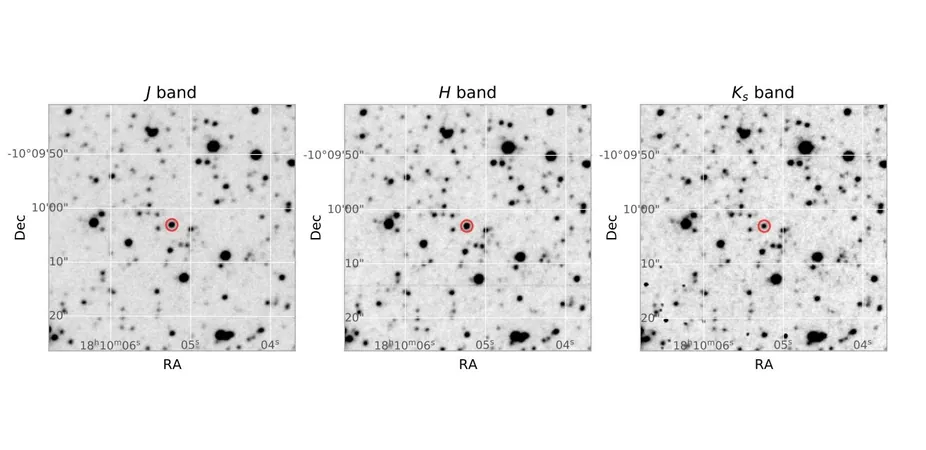
Breakthrough Discovery: Methane Detected in the Atmosphere of the Nearest T Dwarf!
2025-04-07
Author: Rajesh
Introduction
In a groundbreaking finding, astronomers using the 10.4-meter Gran Telescopio Canarias (GTC) have successfully detected methane in the atmosphere of WISEA J181006.18-2101000.5, known as WISE1810, making it the closest T dwarf to Earth, located just 29 light-years away. This exciting discovery was shared in a research paper published on March 28 on arXiv, underscoring the advancements in observational astronomy.
What are T Dwarfs?
T dwarfs are an intriguing class of celestial bodies that are essentially intermediate between planets and stars, with masses ranging from 13 to 80 times that of Jupiter. They are characterized by their low temperatures and luminosities, with T dwarfs specifically having effective temperatures between 500 and 1,500 K. Only around 400 of these elusive objects have been discovered, making WISE1810 a significant target for further study.
Significance of WISE1810
This particular T dwarf is notable for its low metallicity and has an estimated radius of 0.65 Jupiter radii, with a mass approximately 17 times greater than Jupiter itself, and an effective temperature estimated at around 800–1,300 K. Prior observations indicated a chemically altered atmosphere dominated by hydrogen and water vapor, yet methane—a key molecular marker for T dwarfs—had not been detected until now.
Importance of Methane Detection
The detection of methane is crucial, as it reinforces the classification of WISE1810 as a T-type dwarf rather than the previously suggested L-type. Led by astronomer Jerry Zhang from the University of La Laguna, the research team employed the GTC's Espectrografo Multiobjeto Infra-Rojo (EMIR) to conduct new near-infrared photometry, leading to this remarkable discovery.
Further Findings
Additional findings include the estimated carbon abundance of WISE1810 at -1.5 dex, suggesting a metallicity of -1.7 dex. Interestingly, no traces of carbon monoxide or potassium were found in its atmosphere, which may be attributed to its low metallicity and potentially lower temperatures impacting the outcomes of prior searches.
Velocity and Galactic Connection
The study also revealed that WISE1810 has a heliocentric velocity of -83 km/s, suggesting a stronger connection with the Milky Way's thick disk than with its halo, despite its remarkably low metallicity. This data could be pivotal in understanding the population and dynamics of T dwarfs within our galaxy.
Conclusion
As astronomers continue to explore the universe's intriguing classification of celestial bodies, the months ahead promise even more discoveries that could reshape our understanding of the cosmic landscape. Stay tuned for updates on this and other astronomical findings!



 Brasil (PT)
Brasil (PT)
 Canada (EN)
Canada (EN)
 Chile (ES)
Chile (ES)
 Česko (CS)
Česko (CS)
 대한민국 (KO)
대한민국 (KO)
 España (ES)
España (ES)
 France (FR)
France (FR)
 Hong Kong (EN)
Hong Kong (EN)
 Italia (IT)
Italia (IT)
 日本 (JA)
日本 (JA)
 Magyarország (HU)
Magyarország (HU)
 Norge (NO)
Norge (NO)
 Polska (PL)
Polska (PL)
 Schweiz (DE)
Schweiz (DE)
 Singapore (EN)
Singapore (EN)
 Sverige (SV)
Sverige (SV)
 Suomi (FI)
Suomi (FI)
 Türkiye (TR)
Türkiye (TR)
 الإمارات العربية المتحدة (AR)
الإمارات العربية المتحدة (AR)